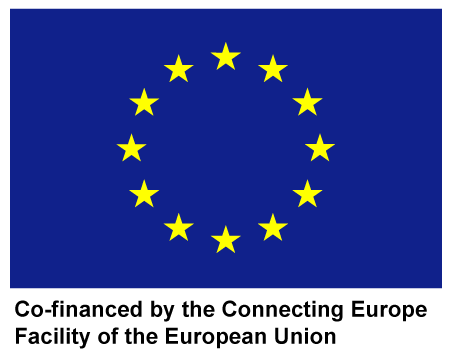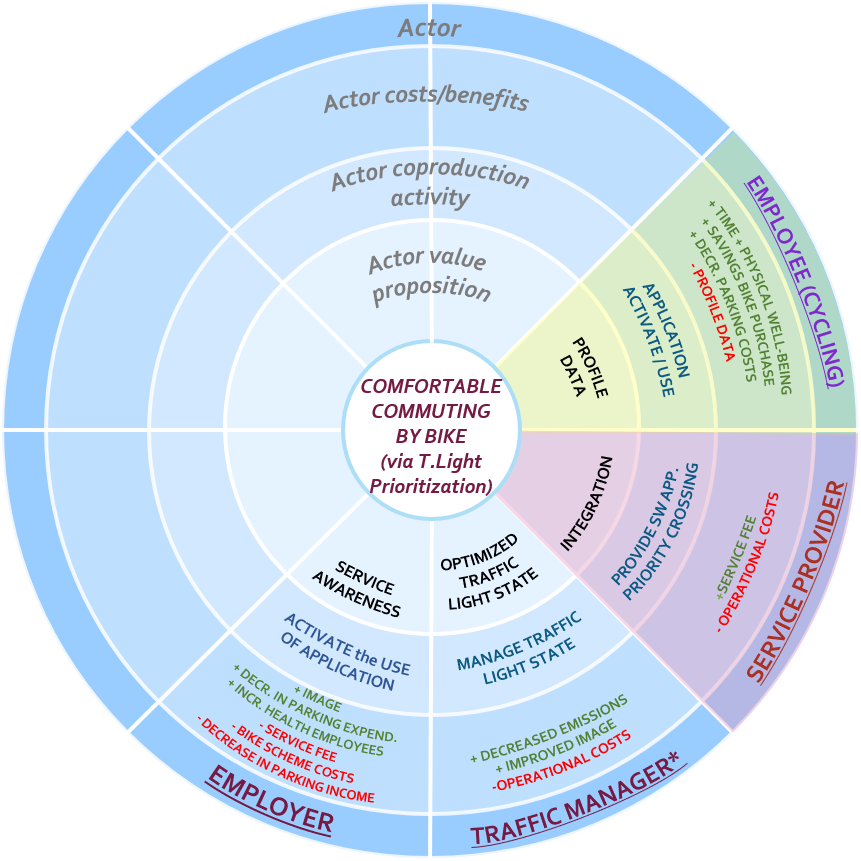
Cooperative Urban
Mobility Portal
Explore Connected and Cooperative Mobility

Cooperative
Urban Mobility Portal
Explore Connected and Cooperative Mobility
Comfortable Commuting By Bike
Business scenario
Reducing car traffic in certain urban regions is among the common objectives of many mobility initiatives. In this business model scenario, an employer (an organization or and industrial zone) aims to endorse or stimulate cycling as the mode of commuting for its employees. This is with the aim to reduce traffic in the vicinity of the business premises, and to reduce the need for parking spaces for private cars on location. To foster this, a service provider offers priority crossing for cyclists via a smart device application, which can be activated through software codes. These codes are purchased by the employer, which distributes these codes to its employees commuting by bike. The service can be adapted or customized to fit the needs of the user or the environment (i.e., activating only during rush hours).
In order to operate the solution, the data concerning the location and travel direction of the user (i.e., commuting cyclist) is collected through the smartphone application. The application runs in the background; as such, no interference of the cyclist is needed. Moreover, traffic lights are equipped with the technology to allow software application on cyclist’s smart device to interact with the lights. Once the cyclist (carrying a smart device with active application) approaches the traffic light, two scenarios occurs. In case of a red light, increased priority is given to the VRU by activating the green light quickly and allowing the cyclist to continue with reduced waiting time. In case of a green light, the duration is extended to support the flow. The service can be catered to the needs or characteristics of the user or can be altered for special conditions (such as the weather).
Business model blueprint
The value proposition of this business model blueprint is comfortable commuting by bike to employees who commute (or will commute) by bike. The comfort implies that the cyclist can maintain a regular speed or flow whilst cycling and is either interrupted less frequently at intersections or can more quickly continue his or her journey after a stop. The service is offered by a service provider, responsible for creating and maintaining the software application to facilitate the employees to interact with the service, in close collaboration with a traffic manager, responsible for managing the traffic light states to enable the service. The employer is included as an enriching partner, stimulating the use of the service through offering discounts on bike purchase schemes and through compensation of the service fee incurred through service use.
The business model blueprint can potentially be further financed through including retailers, who may account for a part of or entire service fee, allowing the service to be offered to a wider public. The service generates profile and regular routing information of the cyclists which can be used to provide customized promotions for the commuters. Depending on the policies in certain regions, retailers might be interested in advertising products or services through the application if the data profile shows that cyclists take a route on which the retailer is located or in the vicinity.
Business model viability
EIn the current scenario, for which the employer(s) compensate the costs of using the service, the long-term viability for the employer depends on savings generated in terms of parking infrastructure and health benefits generated for employees through service use. In scenarios for which limited modal shift is stimulated (e.g., predominantly existing bike users will use the service), these benefits may not be sufficient to offset the long-term costs. However, if modal shift can be increased, both the employer and traffic manager are able to benefit significantly through participation in the business model scenario (through increased health benefits and reduced pollution respectively). Particularly for the traffic manager, the reduction in pollution as a result of modal shift may enable the traffic manager to further (financially) support the deployment of the service, further reducing the service fee charge. The inclusion of retailers as sources of additional financial support can also be considered here.



This website has received funding from the European Union’s Horizon 2020 Research and Innovation Programme
under Grant Agreement number 723311.

